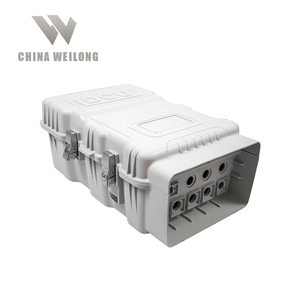-
 Encontrar enMiembros
Encontrar enMiembros Encontrar enVideos
Encontrar enVideos Encontrar enCanales
Encontrar enCanales
This website uses cookies to ensure you get the best experience on our website.
To learn more about our privacy policy haga clic aquíPreferencia de privacidad
- Etiquetas - #China Zinc Die Casting Manufacturer
-
- Última actualización 2 de junio de 2020 0 comentarios, 345 vistas, 0 likes
More from wei long
More in Politics
Related Blogs
China Zinc Die Casting Manufacturer Introduce Common Raw Materials
Cuerpo
If you often purchase precision die casting products, you should be familiar with some common zinc die castings. If you are in a strange state, read this article by China Zinc Die Casting Manufacturer.
In the past, the raw materials for zinc die castings mainly included alloys 2, 3, 4, 5 and 7, while zinc alloy 3 was more commonly used for zinc die castings. Later, there were high aluminum-based alloys ZA-8, ZA-12, ZA-27, and deformed zinc alloys Zn-1Cu-0.1Ti and Zn-22Al. Zinc alloy mainly contains aluminum, copper, magnesium, cadmium, lead, titanium and other elements, of which the effective alloy elements are aluminum, copper and magnesium. Harmful impurity elements: lead, cadmium, tin and iron. (Zinc alloy is also called zinc-based alloy and is generally divided into binary alloy, ternary alloy and multicomponent alloy. Binary zinc-based alloy generally refers to zinc-aluminum alloy; Ternary zinc-based alloy generally refers to zinc aluminum copper alloy; Multi-alloy generally refers to zinc, aluminum, copper and other trace metals)
Zinc alloy no 2: used for mechanical parts with special requirements on mechanical properties, high requirements on hardness, good wear resistance and general requirements on dimensional accuracy.
Zinc alloy No.3: It has good fluidity and mechanical properties, permanent stability in castability and size, corrosion resistance in the atmosphere, and easy recovery and remelting. It is widely used in die castings with low mechanical strength requirements, such as electronic cigarettes, lamps, ornaments, electronic instruments, electronic components, etc.
Zinc alloy No.5 has good fluidity and mechanical properties. It is applied to die castings with certain requirements on mechanical strength, such as automobile parts, electromechanical parts, mechanical parts and electrical components.
ZA8: It has good impact strength and dimensional stability, but poor fluidity. It is applied to workpieces with small die casting size, high precision and mechanical strength requirements, such as electrical appliances.
Superloy: good fluidity, applied to die-cast thin-walled, large-sized, high-precision and complex-shaped workpieces, such as electrical components and their boxes.
Knowing the functions of these zinc alloys, we can easily see that each zinc alloy has its own characteristics and disadvantages. Zinc alloy No.3 has good mechanical properties, low price, good tensile strength, good mechanical properties and relatively stable performance in all aspects, so it is the first choice for general processing materials.
Aluminum Die Casting is also one of our product, welcome to buy and purchase!









Comentarios